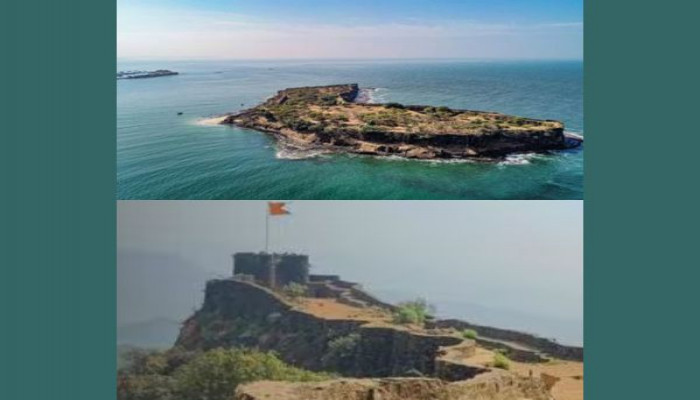India secures UNESCO World Heritage tag for Maratha military forts after overcoming deferral
- In Reports
- 06:47 PM, Jul 12, 2025
- Myind Staff
A detailed nomination file, a specially created coffee-table book, and a determined campaign helped India overcome challenges such as a deferral recommendation to get the Maratha Military Landscapes included in the UNESCO World Heritage list.
On Friday, UNESCO’s World Heritage Committee during its 47th session in Paris approved India’s serial nomination of 12 forts, which reflect the distinct military architecture and defensive strategies of the Maratha empire.
India’s journey from filing the nomination to achieving the inscription was not smooth but constant efforts led to this major success.
India’s Permanent Representative to UNESCO, Vishal V Sharma, formally announced the decision on behalf of the country after the inscription was confirmed.
"This is a historic day, not just for India, but particularly for Marathi people everywhere. The cultural legacy of the Marathas has been respected by the international community recognising its Outstanding Universal Value," he said.
Speaking to PTI over the phone soon after his speech at UNESCO headquarters, Sharma explained what went into getting the recognition.
"It was great teamwork, but it was not quite easy to get the Maratha Military Landscapes inscribed," he said.
"I thank the government of Maharashtra, the Indian Culture Ministry, the Archaeological Survey of India, and the Ministry of External Affairs. We had to coordinate with 20 countries, and it's a perfect example of teamwork," Sharma told PTI.
Sharma said the nomination had received a deferral recommendation from ICOMOS, which meant that the site was not recommended for inscription.
ICOMOS is the International Council on Monuments and Sites, based in Paris and is one of UNESCO’s key advisory bodies. It sends experts to inspect proposed heritage sites.
India pointed out factual mistakes in the report by the advisory body, Sharma said.
"It's a technical case, like you battle it in a courtroom. So, on a video conference with 20 countries' members, we laid out the technicalities and why it should be on the World Heritage List. We made our case and we won the case, so that's why the triumph is all the sweeter," Sharma said.
India had sent the proposal to the World Heritage Committee in January 2024 and the final approval came after an 18-month process involving technical reviews and an inspection by ICOMOS, as per the Culture Ministry.
This nomination was a part of the 2024 to 2025 cycle.
The Maratha Military Landscapes were built between the 17th and 19th centuries.
The 12 selected forts are Salher Fort, Shivneri Fort, Lohgad, Khanderi Fort, Raigad, Rajgad, Pratapgad, Suvarnadurg, Panhala Fort, Vijay Durg, Sindhudurg in Maharashtra and Gingee Fort in Tamil Nadu.
These forts are spread across different terrains and regions and reflect the Maratha empire’s expertise in defensive warfare, according to Indian officials.
There are more than 390 forts in Maharashtra, but only 12 were chosen for this nomination. Of these, eight are already protected by the Archaeological Survey of India, the ministry said.
Sharma said the advisory body had concerns about the selection process and questioned why not more forts were included.
"Then we had to explain why there was a hierarchy of system, primary, secondary and tertiary forts. And, these 12 were the prime ones, and then we told different other Member States," he said.
He also said that compared to forts in Rajasthan, there is not much global awareness about forts in western and southern India.
"So, we used this chance to market Maharashtra and Maharashtra tourism too," he said while addressing the international delegates.
Sharma added that Chhatrapati Shivaji Maharaj’s royal seal, known as the Raj Mudra, was shared to help explain the Maratha philosophy focused on public welfare.
A coffee-table book titled Maratha Military Landscapes was also prepared by the Maharashtra government and shared with delegates, he said.
He described the process as difficult but said it became a good opportunity to speak about India’s cultural heritage beyond the well-known forts of Rajasthan.
When asked about the nomination document, Sharma called it a large one.
"It's a lifetime nomination, I have to tell you," he said.
"Any such dossier runs into 1,000 to 1,500 pages, and our dossier is a very big one, it's like a PhD thesis," he said.
After the nomination was filed, Sharma gave the Maharashtra government a 61-point action plan. This included activities like painting competitions in village schools to raise awareness and preparing a coffee-table book.
Speaking about the inclusion of sites from other countries, Sharma said seeing global diversity being acknowledged by UNESCO is a source of joy.
"This is the epitome of culture acting as a unifying force. You feel happy if your property is inscribed, you feel happy if some other country's property is inscribed," he said.







Comments